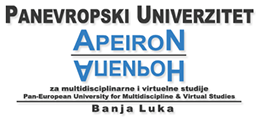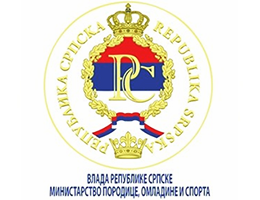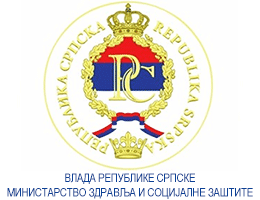Aerobic Physical Exercise and BMI Values in Students With Overweight
Volume 15, Issue 1 (2025)
Volume 15, Issue 1 (2025)
Aerobic Physical Exercise and BMI Values in Students With Overweight
Abstract:
The modern lifestyle and insufficient physical
activity are an increasing problem among the younger
generation. The question arises as to how the educational
system can influence the resolution of this issue.
One way is to introduce additional physical exercise
classes within the regular curriculum or to improve the
program of organized physical exercise with students.
This study analyzed three individual studies that dealt
with the impact of organized aerobic physical exercise
on BMI values and body fat percentage in adolescent
students. In this meta-analysis, standardized mean differences
and relative risk with 95% confidence intervals
were calculated using random effects. The combined value
of the standardized mean difference calculated from
the random effects model is 0.32 (95% CI; -2.74; 3.38).
The combined RR value from the random effects model is
0.34 (-1.15; 1.83). The RR is not statistically significantly
different from one (p=0.6527). No statistically significant
difference was observed between students who, in addition
to the regular classes, participated in organized aerobic
physical exercise aimed at regulating excess weight.
Due to the small number of participants, it is not possible
to generalize the conclusion in this study.
Keywords:
Aerobic physical exercise, Students, Primary school, BMI, Overweight.
Full Text:
References:
Back, K. W., & Ji, C. H. (2015). The Effects of 108-Bae Program on Bodycomposition and Physical Fitness of Obese High School Students.
Indian Journal of Science and Technology, 563-567.
Back, K. W., & Ji, C. H. (2015). The effects of 108-Bae program on body composition and physical fitness of obese high school students. Indian
Journal of Science and Technology, 8(S7), 563-567.
Bull FC, Al-Ansari SS, Biddle S, Borodulin K, Willumsen JF. (2020).World Health Organization
2020 guidelines on physical activity and
sedentary behaviour. Br J Sports Med. 54:1451–62.
Davis JN, Tung A, Chak SS, Ventura EE, Byrd-Williams CE, Alexander KE et al. (2009). Aerobic and Strength Training Reduces Adiposity in
Overweight Latina Adolescents: Medicine & Science in Sports & Exercise, 41:1494–503.
Deforche B, Haerens L, & de Bourdeaudhuij I. (2011). How to make overweight children exercise and follow the recommendations. Int J
Pediatr Obes, 6:35–41.
Gray SR, Ferguson C, Birch K, Forrest LJ, & Gill JMR. (2016). High-intensity interval training: key data needed to bridge the gap from laboratory
to public health policy. Br J Sports Med, 50:1231–2.
Guerra, P. H., Nobre, M. R. C., Silveira, J. A. C. D., & Taddei, J. A. D. A. C. (2013). The effect of school-based physical activity interventions
on body mass index: a meta-analysis of randomized trials. Clinics, 68(9), 1263-1273.
Han YH, & Yang JH. (2000). The effects of warming-up with tube resistance training on the physical fitness and body composition in the high
school student. The Korean Journal of Physical Education, 29(3):556–65.
Kim HR. (2008). A strategy for child and adolescent health promotion: nutrition, overweight and obesity. Forum for Health and Welfare,
141:20–31.
Kim JS. 108 Bae, 10 minutes miracle to be healthy. Pajoo: Areum media, 2004.
Kwan HJ. The Effects on change in squash exercise on body composition and cardiopulmonary functions in obese females [Unpublished Master’s
Thesis]. Busan University; 2001.
Lee DC. Comparison and analysis on body composition, physical fitness and blood lipid level before and after one hundred and eight bows
[Unpublished PhD Thesis]. Silla University; 2008.
Lipnowski, S., LeBlanc, C. M., Canadian Paediatric Society, & Healthy Active Living and Sports Medicine Committee. (2012). Healthy active
living: Physical activity guidelines for children and adolescents. Paediatrics & child health, 17(4), 209-210.
Martin A, Booth JN, Laird Y, Sproule J, Reilly JJ, Saunders DH. (2018). Physical activity, diet and other behavioural interventions for improving
cognition and school achievement in children and adolescents with obesity or overweight. Cochrane Database Syst Rev,
3:CD009728.
Meng, C., Yucheng, T., Shu, L., & Yu, Z. (2022). Effects of school-based high-intensity interval training on body composition, cardiorespiratory
fitness and cardiometabolic markers in adolescent boys with obesity: a randomized controlled trial. BMC pediatrics, 22(1), 112.
Millard HR, Musani SK, Dibaba DT, Talegawkar SA, Taylor HA, & Tucker KL, et al. (2018). Dietary choline and betaine; associations with
subclinical markers of cardiovascular disease risk and incidence of CVD, coronary heart disease and stroke: the Jackson heart study.
Eur J Nutr, 57(1):51–60.
Moher D, Liberati A, Tetzlaff J, & Altman DG. (2009). Prefferred reporting items for systematic reviews and meta-analyses: the PRISMA
statement. BMJ, 339: b2535.
Ng M, Fleming T, Robinson M, Thomson B, Graetz N, & Margono C, et al. (2014). Global, regional, and national prevalence of overweight
and obesity in children and adults during 1980–2013: a systematic analysis for the global burden of Disease Study 2013. The Lancet,
384:766–81.
Pahkala K, Hernelahti M, Heinonen OJ, et al. (2013). Body mass index, fitness and physical activity from childhood through adolescence. Br
J Sports Med, 47:71–77. PMID: 22809525, http://dx.doi.org/10.1136/bjsports-2011-090704
Schwarzer G, Carpenter JR, & Rücker G. Meta-Analysis with R (Use-R!). Switzerland, Cham: Springer International Publishing; 2015.
Seo EJ, Choi YM, Lim, Kim JE, & Jang SR. (2005). The effects of mental training with EEG for dancer on mental attention. Natural Science Daejeon University, 15(2):95–105.
Toriola OM, & Monyeki MA. (2012). Health-related fitness, body composition and physical activity status among adolescent learners: The
PAHL study. Afr J Phys Health Educ Recreat Dance, 18:795–811.
Tremblay MS, & Williams JD. (2003). Is the Canadian childhood obesity epidemic related to physical inactivity? Int J Obes Relat Metab Disord,
27:1100–1105. PMID: 12917717, http://dx.doi.org/10.1038/sj.ijo.0802376
Viechtbauer, W. (2010). Conducting meta-analyses in R with the metafor package. JSS J Stat Software, 36(3): 1‒48.
Zuo, C., Ma, X., Yang, Y., Cui, Y., & Ye, C. (2023). School-based high-intensity interval exercise program in children with overweight induce
a greater improvements in body composition and physical fitness than moderate-intensity continuous exercise. BMC Public Health,
23(1), 2210.






